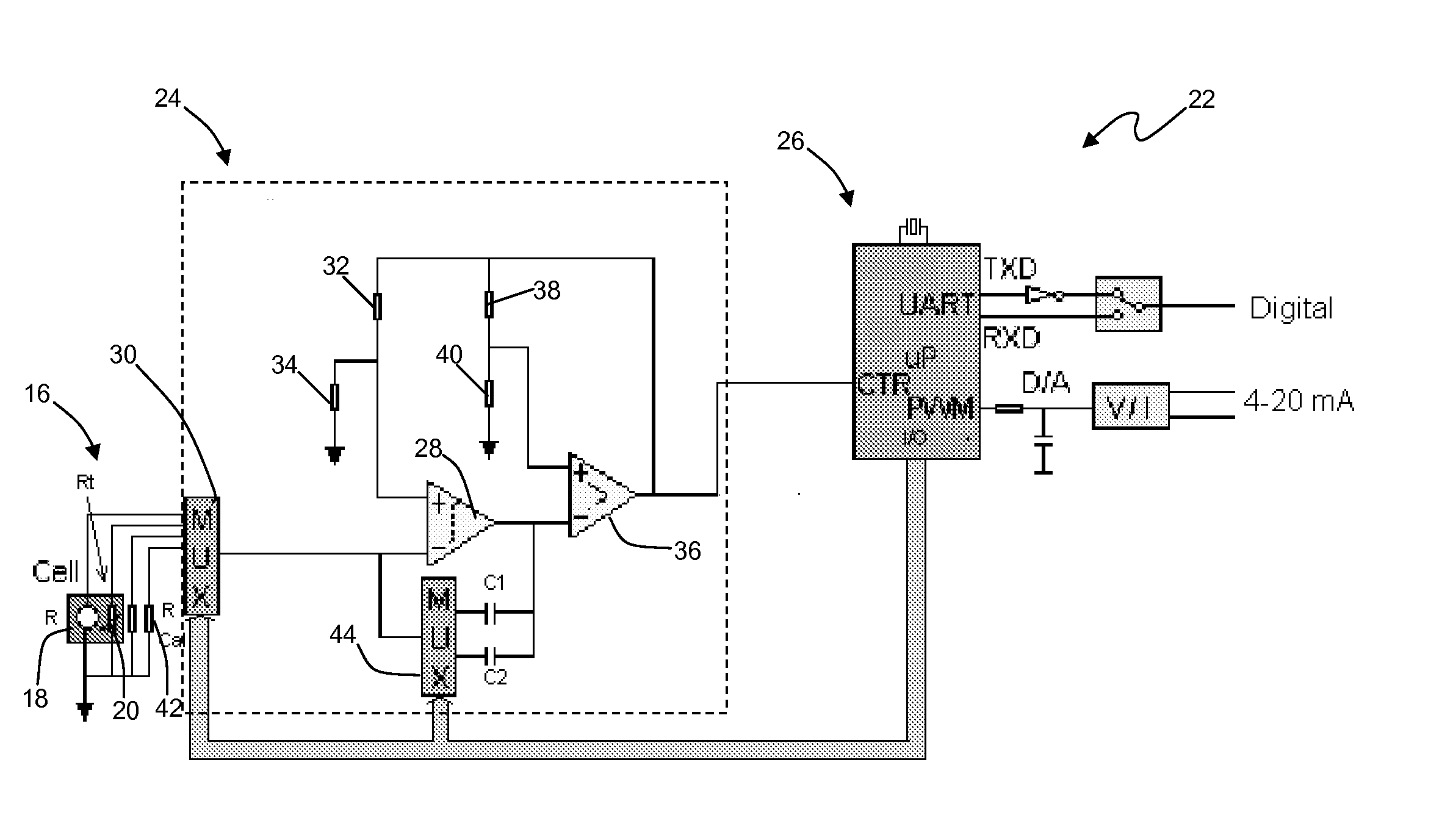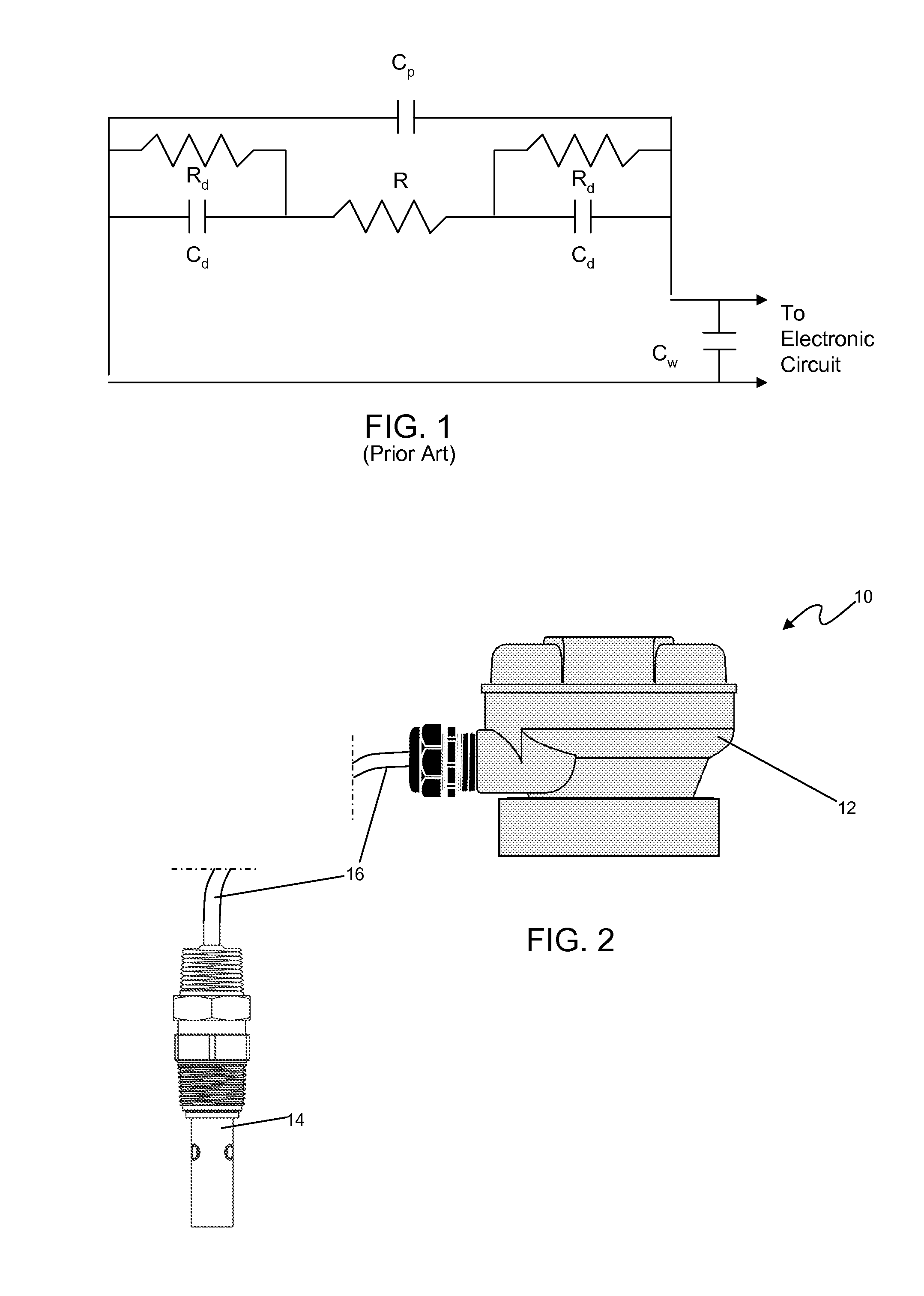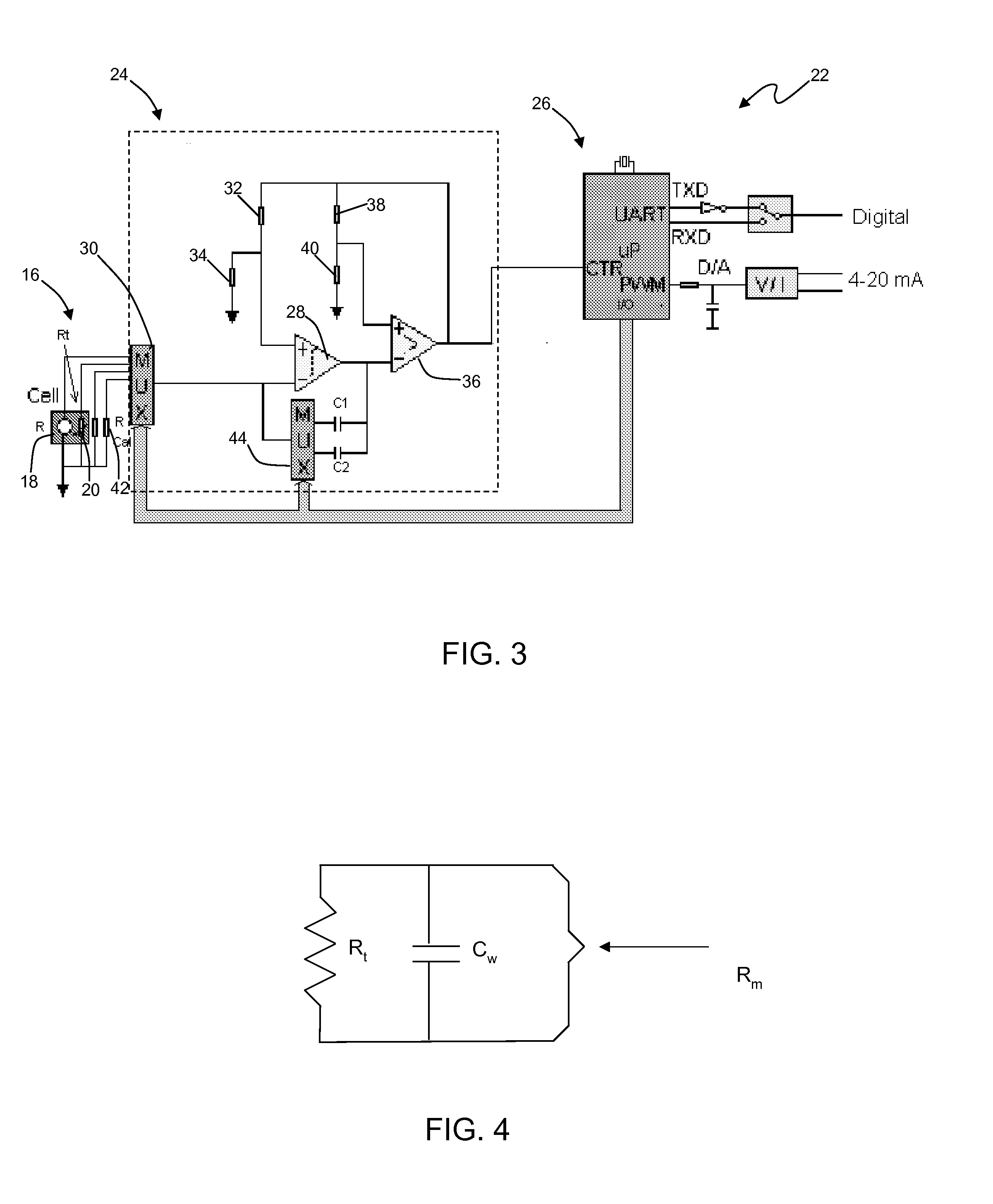System and method for measuring conductivity of fluid
a technology of conductivity and resistivity, applied in the direction of fluid resistance measurement, liquid/fluent solid measurement, instruments, etc., can solve the problems of ion migration in the fluid, dc signal, polarization, and the conductance cell often encountering additional electrical processes
- Summary
- Abstract
- Description
- Claims
- Application Information
AI Technical Summary
Benefits of technology
Problems solved by technology
Method used
Image
Examples
example
[0055]In an exemplary test, the system assembly includes a sensor having stainless steel electrodes with a cell constant of about 1.0, coupled to an electronics subsystem. To provide a baseline, the sensor assembly was operated without benefit of capacitance compensation sequence. Thereafter, the sensor assembly was operated with benefit of the compensation sequence. During both testing sequences, the length of the cable connecting the sensor to the electronics was varied from 3 inches to 15 feet, with measurements taken used both lengths of cables. In this manner, the benefit of the capacitance compensation can be demonstrated
[0056]In the baseline test, the sensor was driven by high frequency signal and measurements of conductivity and temperature were taken of a standard conductivity solution of 1000 uS / cm±0.25% at 25° C. The cable having a length of about 3 inches was used. The system resulted in an error of +0.65% for conductivity and an error of +0.3° C. for temperature. Next, ...
PUM
 Login to View More
Login to View More Abstract
Description
Claims
Application Information
 Login to View More
Login to View More - R&D
- Intellectual Property
- Life Sciences
- Materials
- Tech Scout
- Unparalleled Data Quality
- Higher Quality Content
- 60% Fewer Hallucinations
Browse by: Latest US Patents, China's latest patents, Technical Efficacy Thesaurus, Application Domain, Technology Topic, Popular Technical Reports.
© 2025 PatSnap. All rights reserved.Legal|Privacy policy|Modern Slavery Act Transparency Statement|Sitemap|About US| Contact US: help@patsnap.com



